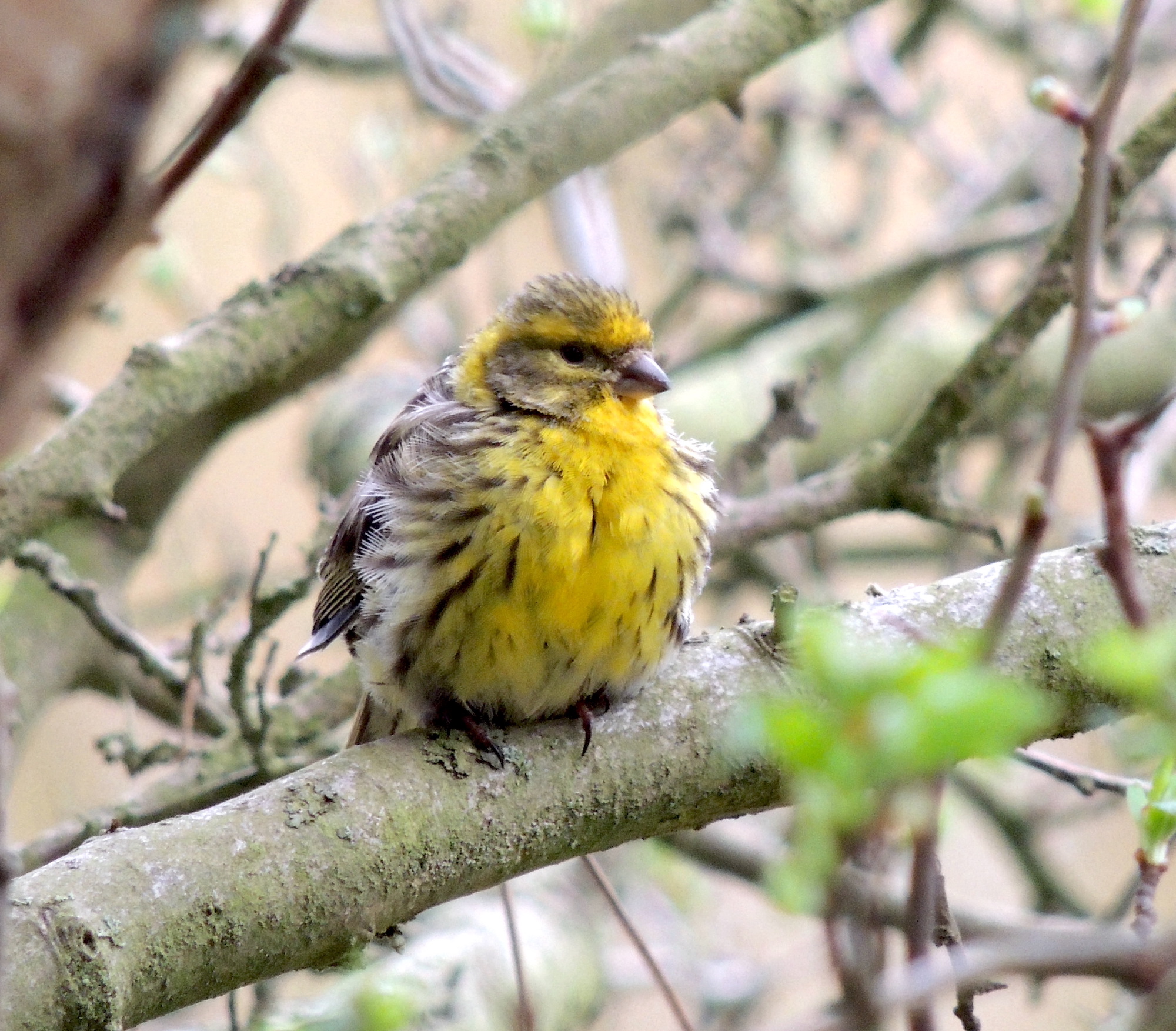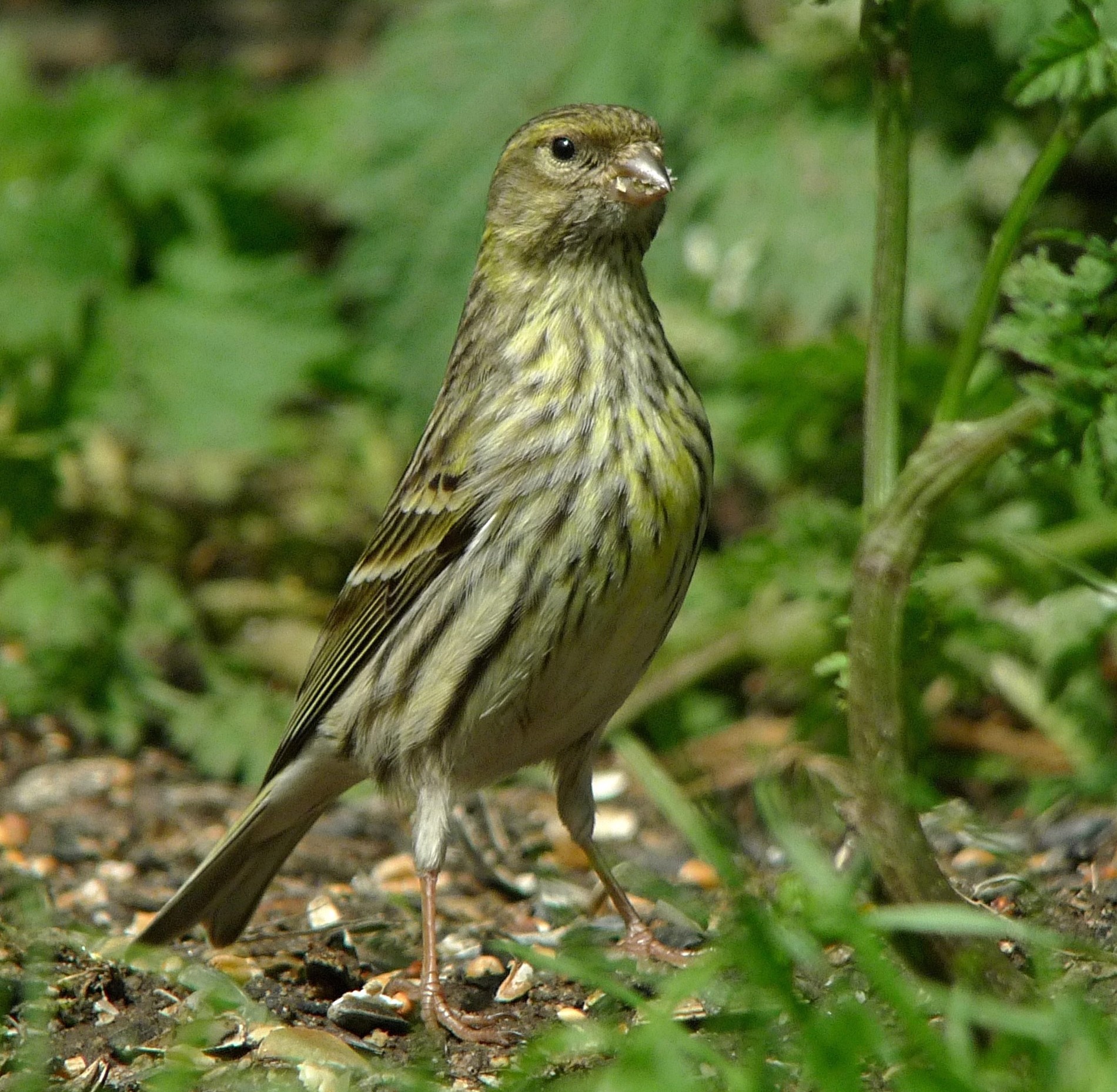European Serin Serinus serinus
Rare migrant in April to June and September to November.
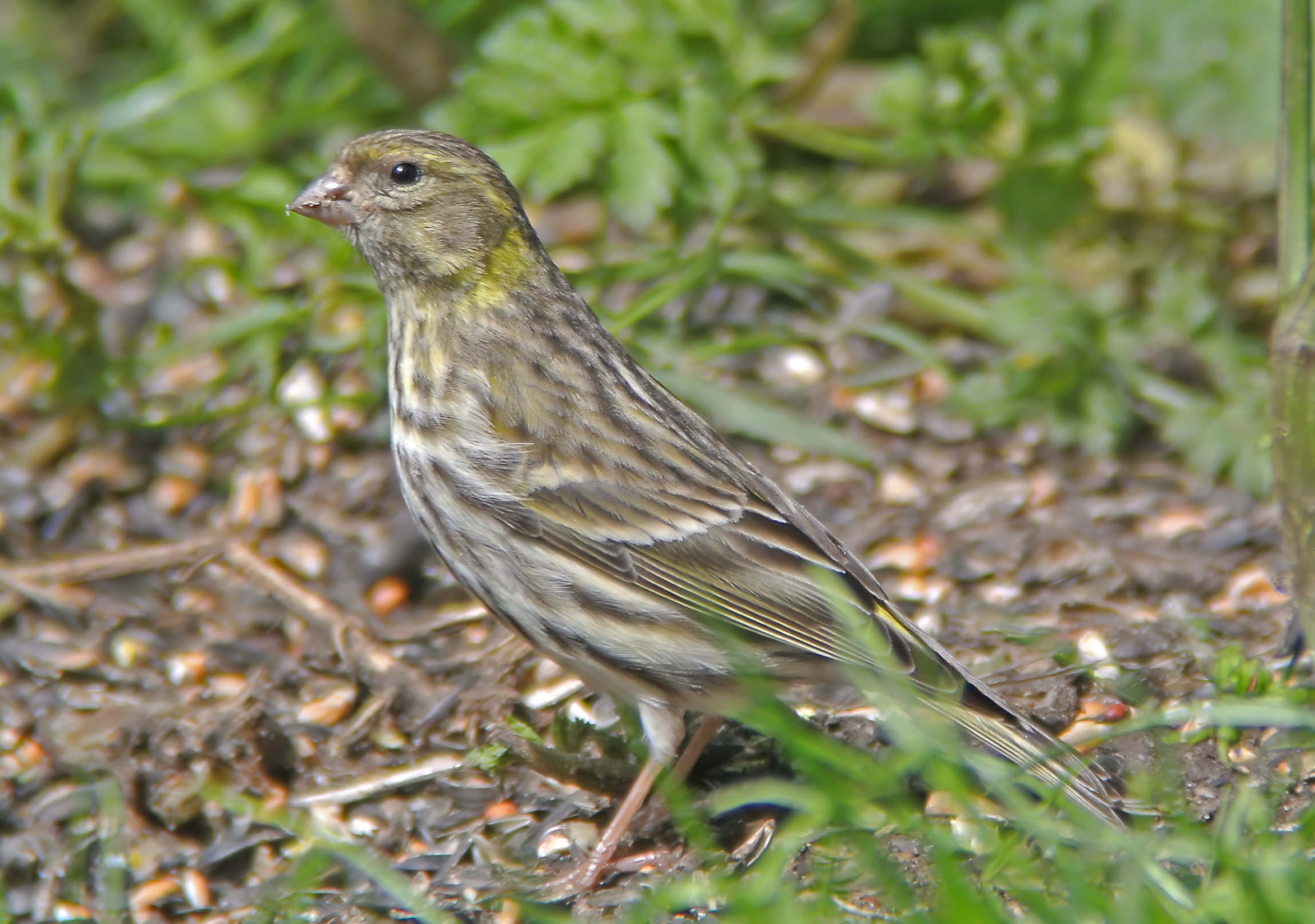
Serins at Gibraltar Point: left, April 27th 2013 (Kev Wilson); centre and right, both 11th May 2014 (Paul Neale, Paul Sullivan).
The first record was a bird seen at Gibraltar Point on May 16th 1961, since when the total number of records stands at 42 involving 44 individuals in all. Birds have been recorded in all months from Mar-Dec, but the majority has been between April-early June (27 of the 30 records). Twenty-eight of the 44 birds recorded have been at Gibraltar Point with six others at Donna Nook. Inland records are exceptional and include a bird trapped at Brumby Common near Scunthorpe on August 12th 1976 and a singing male at Riseholme near Lincoln present from May 24th-Jun 2nd, 1996 which has been the longest staying individual so far. The species remains a surprisingly rare bird in Lincolnshire with almost all recent records involving birds seen briefly flying along the coast on a single date.
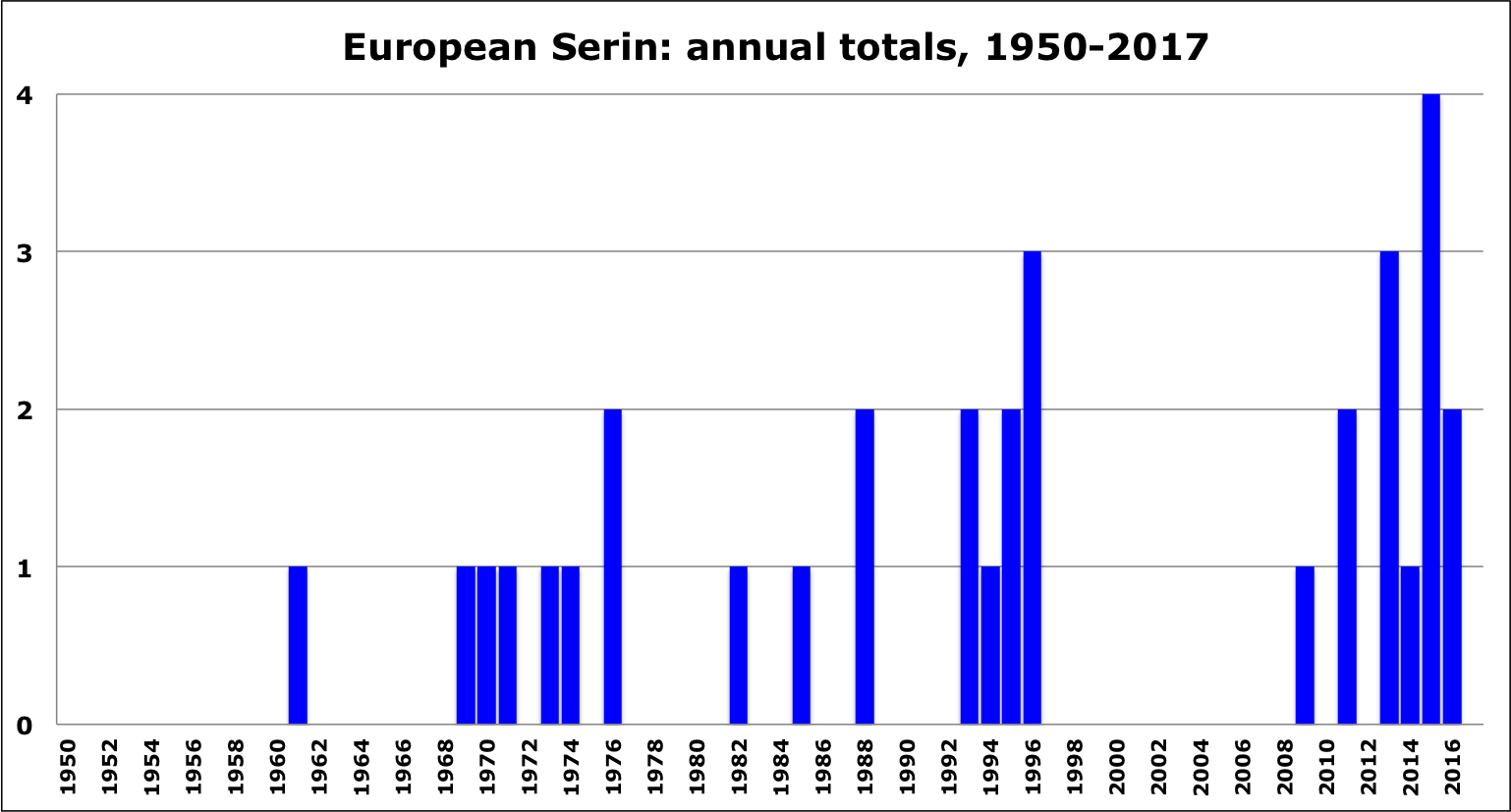
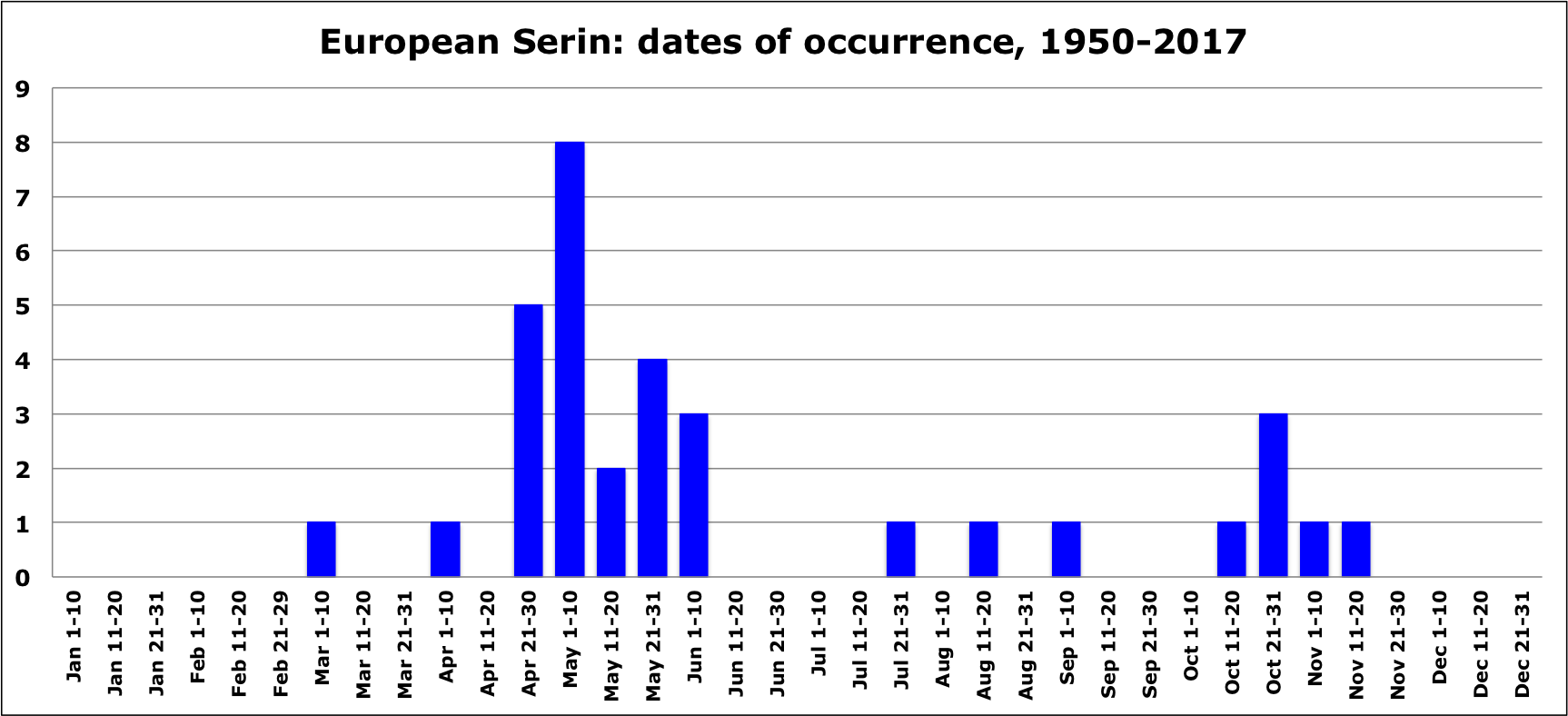
European Serin was dropped from the BBRC rarities list in 1982. There were 70 British records prior to 1958, but a massive 2,210 records during 1958-2018. The average in Britain, 2010-2018 has been 39 per year. They have bred in Britain, the first record being in Dorset in 1967 and then sporadically since then in Devon, Dorset, Sussex and East Anglia but no more than one or two pairs a year. Just 35 Serins had been ringed in Britain up to 2019 including the one caught at Brumby Common, the sole recovery was a bird ringed in Norfolk in 1993 found dead (hit glass) five days later.
Finder’s report: Serin at Gibraltar Point NNR, May 16th, 1961, first county record.
by A. D. Townsend.
Note: this account is based on the original RC submission and on correspondence with the RC. In their 1961 report, there were four other British records in addition to the Lincolnshire one.
Circumstances
A small bird was flushed from dense Buckthorn at edge of freshwater pond at western boundary of Gibraltar Point NNR. As the bird flew away from me, circling and settling in nearby Buckthorn, I had a good view of a very yellow rump. I then had the bird under observation for just over half a minute at a range of 15-20 ft., using 10x40 glasses. The bird was facing me, when the following mental notes were made to be copied down after the bird flew off westwards. The only call I heard was a faint ‘twit-twit-twit’ when in flight.
Description
General appearance – impression was of a very yellow, small, Redpoll-sized finch.
Head and crown – top of head and cheeks greenish; forehead, eye stripe and an area starting near ear coverts and extending as far as I could see, to nape, were bright yellow.
Upperparts – I cannot recall any detail of the mantle, nor wing markings, if any.
Underparts – breast, and what I could see of the underparts yellow, sides of breast lightly streaked with dark striations.
Tail - tail short and quite deeply forked, this was only seen from below, as the bird was facing me.
Bare parts – bill horn coloured, very small and stubby.
Further correspondence
In a letter to I. J. Ferguson-Lees dated May 27th, ADT offered the view that the Serin was “doubtless an escape”. In a reply dated June 1st, 1961, IJF-L pointed out that Serins are very little kept in captivity, if at all, and that one seen at large is far more likely to be a genuine wild bird because this species is extending its range on the Continent. He also wondered if ADT had considered the possibility of other Serinus sp., particularly Green Singing Finch, S. mozambicus (note: in modern parlance, this species is known as Yellow-fronted Canary, Crithagra mozambica). ADT replied on June 7th, 1961, that he had read the article by Goodwin (British Birds 49:344-346, 1956) on the problems of birds escaping from captivity, and had dismissed S. mozambicus at once for the following reasons:
Head and face markings not well defined; tail forked; streaks on flanks and sides of breast; yellow on the forehead extended well on to the crown.
ADT had also heard that there had been Serins at Spurn, April 13th, 1961, and Dungeness, May 29th, 1961, and felt happier with his record and had no doubt that it was a Serin, Serinus serinus, the first county record, and accepted by the RC.
(Updated with reference to the new Birds of Lincolnshire (2021) January 2023)


